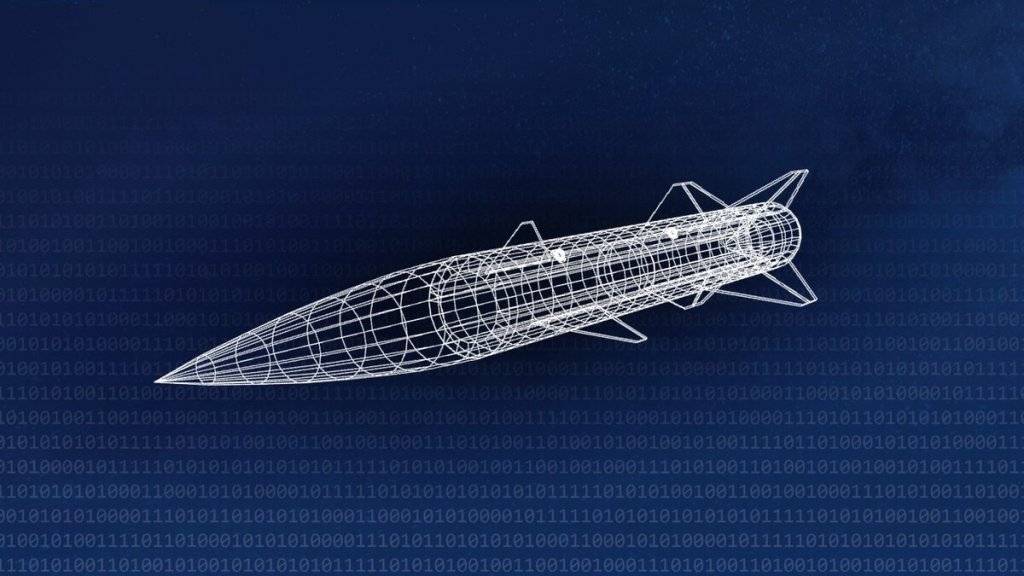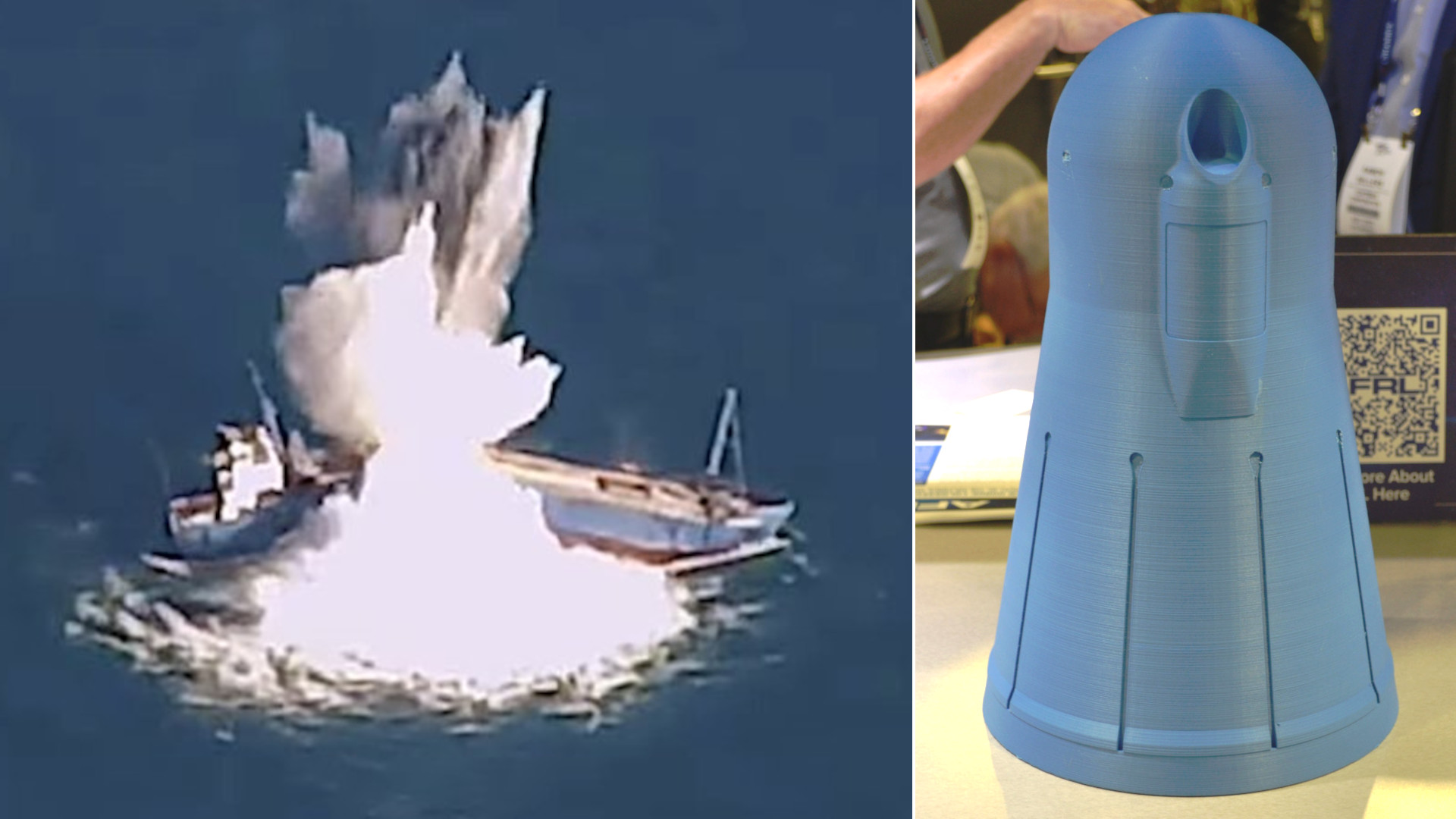A new, relatively cheap precision-guided air-launched stand-off munition the U.S. Air Force is working on could be employed against ships with the help of seeker technology from the service’s Quicksink program. The Extended Range Attack Munition (ERAM), under development primarily for Ukraine, is otherwise shaping up to be a highly modular design, variants of which could be optimized for use against other target types.
The Stand-In Strike Division of the Air Force Life Cycle Management Center’s Armament Directorate, based at Eglin Air Force Base in Florida, provided new details about ERAM, including plans to leverage work done under Quicksink, in a recent contracting notice. Plans for ERAM first emerged in January 2024. In addition to Ukraine, NATO allies Denmark and the Netherlands are also known to be involved in the program.

The Air Force “is seeking support to procure ERAM hardware capability (GPS receivers, seekers, navigation units, radio solutions, datalink, or other capabilities to add operational capabilities to the weapon). The ERAM program is currently executing an Other Transaction Authority (OTA),” the contracting notice explains. “The OTA will conclude with a Phase 2 development option, a full rate production OTA, and potential future development for additional capabilities. This request will support these future opportunities for the USAF to procure ERAM baseline configuration.”
OTA is a Pentagon contracting mechanism intended to support rapid prototyping and other research development work without having to go through more traditional and often more drawn-out contracting processes.
“Future ERAM phases will incorporate various seekers, payloads, and capabilities to enhance performance in GPS-denied areas and or to produce ERAM variants to achieve disruptive effects when launched,” the notice adds. “Equipment, interfaces, prototypes, engineering support, digital model integration support, and support documentation will be necessary to integrate these capabilities.”
In line with this, the Air Force is now looking to get potential “pricing and schedule for 10 BAE prototypes of the QuickSink seeker in a form factor to support ERAM integration and engineering efforts.”
As TWZ has previously reported, the Quicksink seeker that has been developed and tested already on a modified 2,000-pound-class GBU-31/B Joint Direct Attack Munition (JDAM) precision-guided bomb is a dual-mode design. It features a radar seeker and an imaging infrared (IIR) camera. The Quicksink JDAM uses its existing GPS-assisted inertial navigation system (INS) guidance package to get to a designated target area first. Once there, the weapon switches over to the seeker, which uses its two components to find and categorize the target by checking its length against a detailed internal reference database. The seeker also provides a velocity vector for the target and course corrects the munition’s flight path so that it hits the water right next to it before exploding below the waterline for maximum damage.

The combination of radar and IIR offers valuable targeting flexibility in all weather conditions. IIR cameras are also immune to radiofrequency electronic warfare jamming and provides enhanced target descrimination.
The Quicksink seeker itself was designed with a high degree of modularity leveraging plug-and-play architecture to allow for the relatively rapid integration of new and improved functionality in the future, as well as to help keep costs down. The Air Force has said in the past that the initial examples of the seeker cost around $200,000 each, but that it was hoping to drive that unit down to at least $50,000.

TWZ has noted in the past how the Quicksink seeker, or elements thereof, might be adaptable to other munitions, offering a relatively low-effort pathway for add-on anti-ship capability. What changes might be needed to integrate the seeker onto ERAM are unknown.
The recent contracting notice also names three other subsystems for potential inclusion on ERAM – Marshall Deck of Cards (Marshall DoC), Shepherd, and FALCO – more specific details do not appear to be readily available. As with the Quicksink Seeker, mention is made of “BAE” in relation to these other systems, which looks to be a reference to defense contractor BAE Systems. The Marshall DoC system is also described as “the top priority for integration with the ERAM weapon” and appears to be particularly operationally sensitive with an explicit additional demand for “a potential anti-tamper solution to establish root of trust and protect [its] … software from exploitation and or battlefield loss.”
TWZ has reached out to the Air Force and BAE for more information.
Details about the baseline ERAM configuration are still limited. In a previous contracting notice, the Air Force laid out requirements for a 500-pound-class precision munition with a range of up to 250 miles while flying at a speed of at least Mach 0.6. The weapon also has to use an INS-based guidance package “capable of operating in a GPS degraded environment” and that offers “terminal Accuracy” of “CEP 50 w/in 10m” (the ability to impact within 10 meters, or around 33 feet, of a specified point at least 50 percent of the time) in “both in non-EMI (Electromagnetic Interference) and high EMI environments (includes GPS degraded).”
Regardless, pairing ERAM with the Quicksink seeker technology makes good sense, both for Ukraine and any other future users of the munition. The Air Force initiated Quicksink as a means to rapidly and cheaply increase its ability to launch aerial anti-ship attacks, to begin with. ERAM offers a way to then also extend the reach of that capability, helping keep launch platforms just that much further away from air defense threats.

For Ukraine, ERAMs configured to strike targets at sea or on land would just offer a valuable new source of lower-cost air-launched precision-guided munitions. It’s not hard to foresee additional interest in a munition of this kind for the same reason coming from the armed forces of other countries, including the U.S. military, either. In January 2024, the U.S. Navy put forward its own requirements for a Multi-Mission Affordable Capacity Effector (MACE), a lower-cost anti-ship missile that would also be small enough to fit inside the internal weapon bays on at least some variants of the stealthy F-35 Joint Strike Fighter.
ERAM and MACE are just some of a number of known U.S. military projects currently exploring options for new longer-ranged precision-guided munitions that are also relatively low-cost and easy to produce at scale. Interest in types with anti-ship capability is particularly acute given the pricey slate of available air-launched options available to America’s armed forces, including variants and derivatives of the AGM-84 Harpoon (including the Standoff Land Attack Missile Expanded Response, or SLAM-ER), the Joint Strike Missile (JSM), and the AGM-158C Long Range Anti-Ship Missile (LRASM). The unit price of the main LRASM variant currently in production, the AGM-158C-1, is around $3 million. A munition like ERAM would be shorter-ranged and have less advanced capabilities than LRASM, but a large stockpile of them could also help commanders keep more capable weapons in reserve for more heavily defended and otherwise challenging targets.
Work now on projects like ERAM follows years of similar efforts and is being driven heavily by the expected demands of a future high-end fight. Especially in the opening phases of a potential major conflict in the Pacific with China, American forces would be called upon to prosecute tens of thousands of targets across a broad and highly-contested battlespace. There would then be a need to conduct sustained strike operations afterward, which would demand a steady pipeline of additional munitions. Many of America’s allies and partners are planning around similar operational requirements. For the U.S. military, lessons learned from the conflict in Ukraine, as well as ongoing operations around the Middle East, have highlighted concerns about existing stockpiles of key munitions and the ability to replenish them.
Much remains to be learned just about ERAM’s baseline design, but we now know the Air Force at least plans to explore an anti-ship configuration taking advantage of the seeker from the Quicksink program.
Contact the author: joe@twz.com
